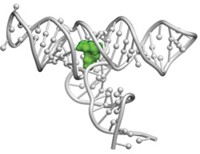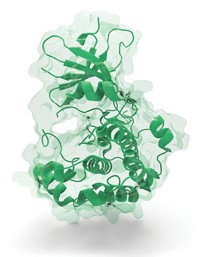Advertisement
Grab your lab coat. Let's get started
Welcome!
Welcome!
Create an account below to get 6 C&EN articles per month, receive newsletters and more - all free.
It seems this is your first time logging in online. Please enter the following information to continue.
As an ACS member you automatically get access to this site. All we need is few more details to create your reading experience.
Not you? Sign in with a different account.
Not you? Sign in with a different account.
ERROR 1
ERROR 1
ERROR 2
ERROR 2
ERROR 2
ERROR 2
ERROR 2
Password and Confirm password must match.
If you have an ACS member number, please enter it here so we can link this account to your membership. (optional)
ERROR 2
ACS values your privacy. By submitting your information, you are gaining access to C&EN and subscribing to our weekly newsletter. We use the information you provide to make your reading experience better, and we will never sell your data to third party members.
Pharmaceuticals
Arrakis launches to develop RNA-targeting small-molecule drugs
Biotech firm will chase an array of previously intractable targets
by Lisa M Jarvis
February 27, 2017
With $38 million in funding from a swath of investors, Arrakis Therapeutics has formally launched to create a new class of drugs: small molecules that directly bind to RNA.
Led by biotech veteran Michael Gilman, who previously started and sold Stromedix and Padlock Therapeutics, Arrakis is chasing the vast number of “undruggable” targets that have frustrated the industry.
Medicinal chemists largely design small molecules that bind to active sites on cellular proteins. But sometimes that pocket is inaccessible, and researchers can’t find other toeholds by which their molecules can modulate a protein’s activity. Arrakis thinks those vexing targets can be accessed by going after the RNA transcripts for the protein, rather than the protein itself.
The challenge is that proteins have a relatively fixed structure. RNA, on the other hand, is more dynamic. “Let’s say a messenger RNA is floating around the cytoplasm,” Gilman explains. “It’s flip-flopping and sampling lots of different structures.” The right small molecule could lock into an RNA structure and keep it from performing its duties.
To find those small molecules, Arrakis’s founders determined when conventional drug discovery tools could be applied to RNA targets and when they would need to develop new tools. Arrakis’s founder and chief scientific officer, Jennifer Petter, an organic chemist who previously worked with Gilman at Biogen, developed two platforms that, used in tandem, should yield drug candidates.
A bioinformatics tool—dubbed Tryst—allows Arrakis to identify sites on RNA where small molecules can latch on. Arrakis has come up with “a pretty interesting target list of RNAs we’d like to go after and potential mechanisms by which we think binding these RNAs with small molecules will interfere with their function,” Gilman says.
And a set of chemical biology tools—PEARL-seq—enables Arrakis to validate the efficacy and selectivity of its small molecules. The tools allow the firm to confirm that its compounds are inhibiting RNA inside cells, to map out their binding sites, and to decide whether a compound is only hitting the problematic RNA.
When going after RNA with a small molecule, “the great unknown is selectivity,” Gilman acknowledges. “Let’s just assume we can figure out how to bind RNA. Then the question is, Can you do it in a way that you bind one and only one” and not disrupt the activity of the tens of thousands of other RNAs in the cell?
Arrakis sees the problem as surmountable. Typically, medicinal chemists study how the structure of a molecule affects its activity by tweaking it and watching how its function changes. The ability to quickly and cheaply make RNA offers a way to explore that structure-activity relationship in reverse: Instead of changing the small molecule, researchers can make different variants of the same RNA.
Arrakis is focused on three therapeutic areas: neurology, oncology, and rare genetic disorders. Although the company has thus far relied on contract research organizations, it is now moving into labs in Waltham, Mass., “and will build out a strong bench-level scientific team,” Gilman says.
UPDATE
This story was updated on March 16, 2022, to correct Jennifer Petter's name.





Join the conversation
Contact the reporter
Submit a Letter to the Editor for publication
Engage with us on Twitter